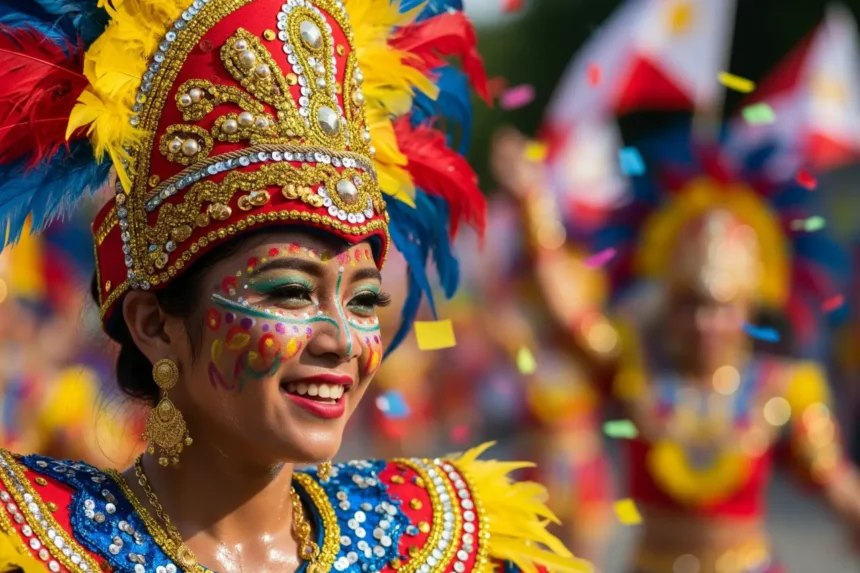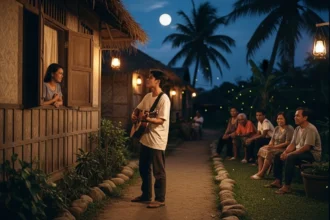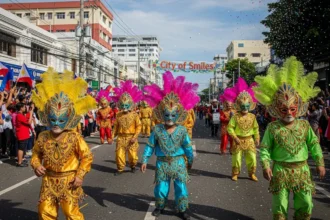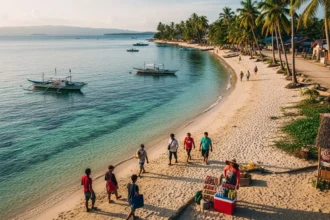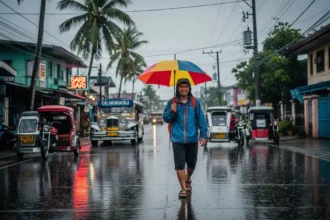🌟 Why Sinulog is More Than Just a Festival
Every January, Cebu City transforms into one giant street party filled with music, colors, and endless dancing. The Sinulog Festival, held in honor of the Santo Niño (Child Jesus), is the Philippines’ grandest and most famous fiesta. What started as a religious ritual has grown into a mix of culture, devotion, and pure fun – with millions of locals and tourists flooding the streets to celebrate.
- 🌟 Why Sinulog is More Than Just a Festival
- 📜 A Quick Background on Sinulog
- 🗓 When and Where It Happens
- 🚶 The Grand Parade: What to Expect
- 🛠 Survival Tips for First-Timers
- 🍴 Where to Eat During Sinulog
- 🛏 Where to Stay
- 🚌 Getting Around
- 🎶 Street Parties: The Wild Side of Sinulog
- 💸 Budget for Sinulog
- 📱 Useful Apps & Tips
- 📚 Frequently Asked Questions
- ❤️ The Spirit of Sinulog
For first-timers, it can be overwhelming: parades, street dancing, concerts, food stalls, and crowds that feel like the entire country came to party in Cebu. But with the right preparation, you can survive – and actually enjoy – every bit of the Sinulog madness.
This guide gives you everything you need to know: from routes and schedules to survival tips, safety advice, and the best way to make the most out of Cebu’s biggest fiesta.
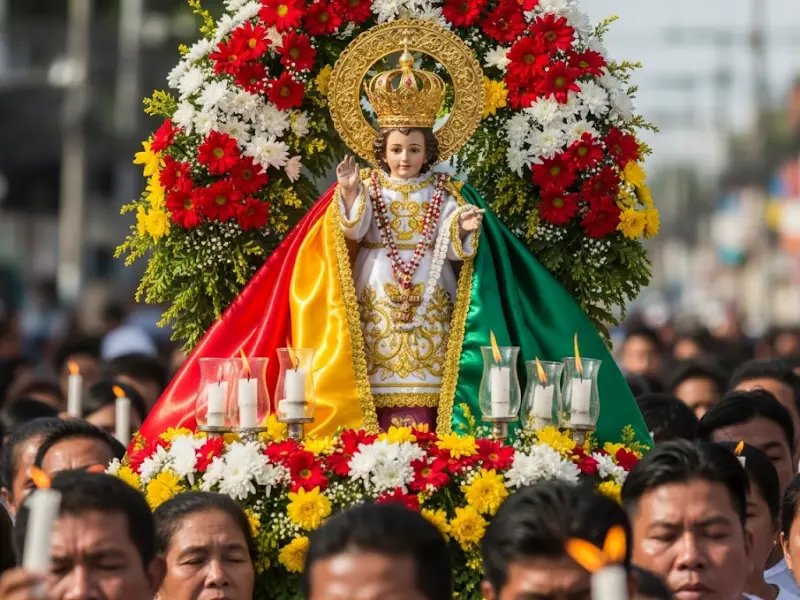
📜 A Quick Background on Sinulog
Sinulog isn’t just a festival – it’s one of the Philippines’ biggest and most colorful celebrations, blending faith, history, and culture into one unforgettable event.
🌊 Origin of the Name
The word “Sinulog” comes from the Cebuano word sulog, meaning “like water current.” It refers to the dance’s signature forward-and-backward steps, said to mimic the movement of flowing water. This rhythmic dance is the heartbeat of the festival.
✝️ Religious Significance
At its core, Sinulog is a religious celebration in honor of the Santo Niño (Child Jesus). The image of the Santo Niño was gifted by Ferdinand Magellan to Queen Juana of Cebu in 1521, marking the Philippines’ introduction to Christianity. Today, the devotion to the Santo Niño remains one of the strongest expressions of faith in the country.
🎭 The Main Highlight: The Grand Parade
The Grand Parade is the crown jewel of Sinulog – a day-long procession where thousands of dancers in dazzling, colorful costumes take over the streets of Cebu City. Accompanied by booming drums, floats, and street bands, the energy is electrifying. Expect a swirl of feathers, sequins, and chants of “Pit Señor!” echoing through the crowd.
🎉 Other Activities During Sinulog
Beyond the parade, Sinulog week is packed with events:
-
Novena masses – Nine days of prayer leading up to the feast day.
-
Fluvial procession – A river and sea parade where decorated boats carry the Santo Niño along the Mactan Channel at dawn.
-
Cultural shows and concerts – Local and international artists light up the nights.
-
Street parties – Entire streets transform into massive dance floors, with music blasting and people painting their faces in festival colors.
Sinulog is both solemn and spectacular: mornings often start with prayer, but by nightfall, the city explodes in music, dancing, and celebration. It’s Cebu at its most alive.
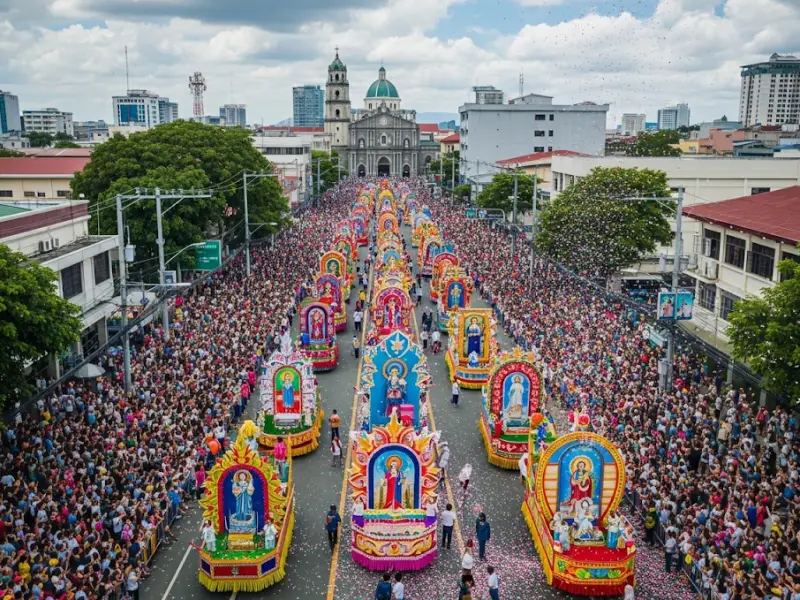
🗓 When and Where It Happens
The Sinulog Festival takes place every third Sunday of January, but Cebu City doesn’t just celebrate for a day – the festivities stretch out for more than a week, turning the whole city into one giant street party.
-
Date: While the official feast of the Santo Niño is on the third Sunday, expect activities to start as early as the week before – novena masses, cultural shows, concerts, and smaller processions build the hype leading up to the big day.
-
Location: The heart of the action is in Cebu City. The Grand Parade route usually winds through Fuente Osmeña Circle, Mango Avenue, and ends at the Cebu City Sports Center, where the final showdown performances are held. These streets transform into rivers of dancers, floats, and crowds of spectators.
-
Duration: The full celebration can last up to 9 days, but the Grand Parade on Sunday is the undisputed climax – with vibrant costumes, pulsating drum beats, and tens of thousands of people flooding the streets.
👉 Pro Tip: Even if you can only make it for the weekend, you’ll still catch the best of Sinulog – the Grand Parade by day and the wild street parties by night. Think giant open-air clubs with music, paint, and good vibes that last until dawn.
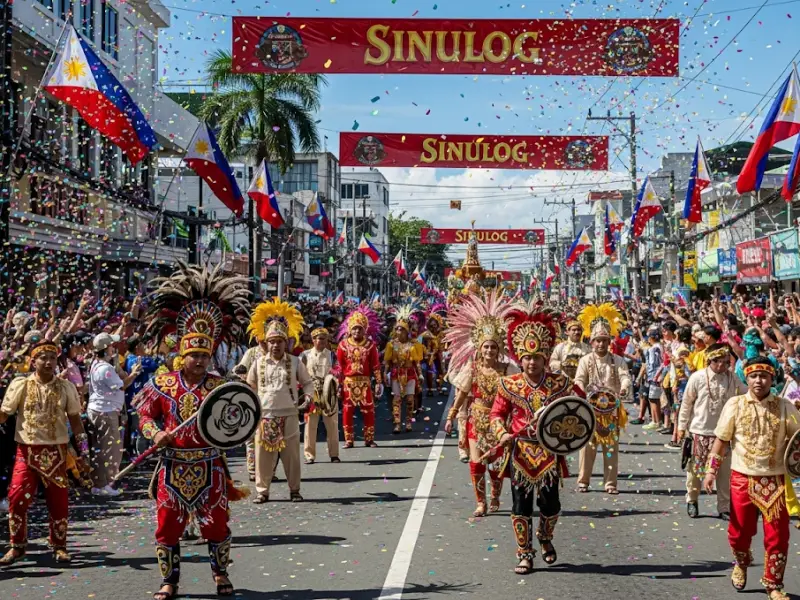
🚶 The Grand Parade: What to Expect
The Sinulog Grand Parade is the heart of the festival and the reason thousands of visitors flock to Cebu every January. It’s not just a parade – it’s an explosion of color, sound, and energy that runs from morning until evening, turning the entire city into one massive celebration.
🎭 Floats & Dancers
Picture this: thousands of dancers in glittering, feathered costumes moving to the hypnotic Sinulog beat – the steady boom of drums and chants of “Pit Señor!” echoing through the streets. Floats decorated with flowers, giant Santo Niño statues, and cultural themes roll past, each more elaborate than the last. Every group brings its own flair, blending tradition with modern spectacle.
👥 Crowds Everywhere
The streets of Cebu City transform into rivers of people. Locals, tourists, and devotees all cram together, shoulder to shoulder. With most main roads closed, you’ll be walking – a lot. Think of it as part parade, part pilgrimage.
☀️ Heat & Waiting
Patience (and hydration) is key. The parade can last 8–10 hours, and under the January sun, it’s no joke. You’ll be standing, walking, and waiting for long stretches. Pack a hat, sunscreen, and plenty of water. Some locals even bring folding fans or mini umbrellas.
📍 Pro Tips for the Best Experience
-
Secure your spot early. The best views are near Fuente Osmeña Circle or the grandstand at the Cebu City Sports Center, where performances are at their peak.
-
Expect checkpoints. Bag checks are common for safety, so travel light.
-
Wear comfy shoes. You’ll be on your feet all day.
-
Soak up the vibe. Don’t just watch – join the chants, clap to the beat, and let yourself get swept into the energy.
The Grand Parade is more than just a show – it’s Cebu’s soul on full display, where devotion meets street party, and everyone is welcome.
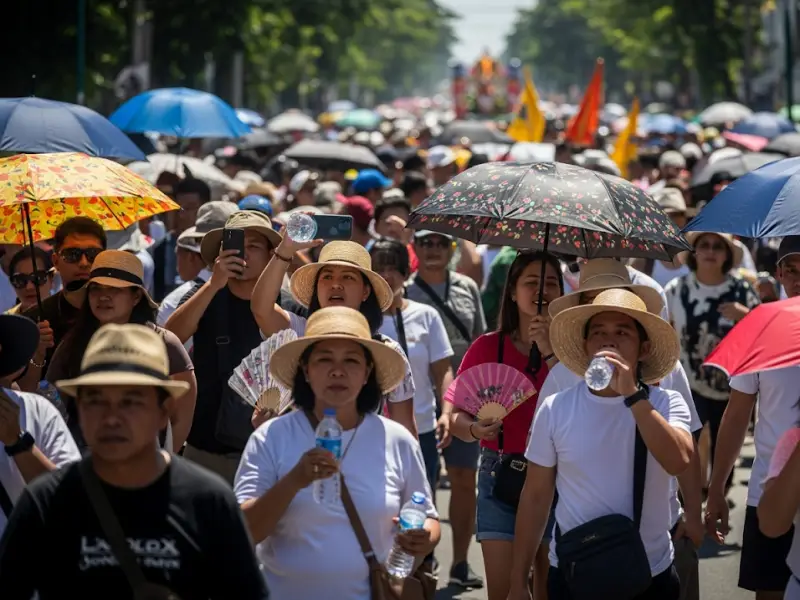
🛠 Survival Tips for First-Timers
👟 Wear the Right Clothes
-
Light, breathable clothing – it gets hot.
-
Comfortable shoes – you’ll walk all day.
-
Avoid white shirts if you plan to join the street parties (paint and beer showers are common).
💧 Stay Hydrated
-
Bring a refillable water bottle.
-
Convenience stores get crowded, so stock up in advance.
🎒 What to Pack
-
Small backpack or belt bag (secure, not easy to snatch).
-
Power bank – you’ll take lots of photos/videos.
-
Face towel or wet wipes.
-
Earplugs if you’re sensitive to loud music.
🕶 Safety Tips
-
Beware of pickpockets in crowded areas.
-
Keep cash small (₱20, ₱50, ₱100 bills).
-
Travel with friends – easier to navigate and safer.
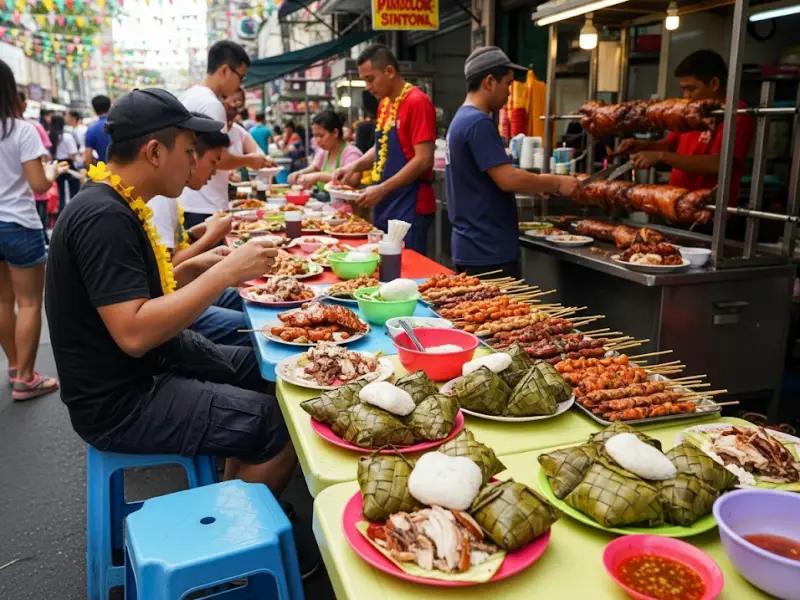
🍴 Where to Eat During Sinulog
Food is just as much a part of Sinulog as the dancing and parades. During festival week, Cebu turns into a giant open-air buffet – food stalls, pop-up grills, and makeshift eateries take over sidewalks and plazas, keeping everyone fueled for the long celebrations.
🌟 Street Eats Everywhere
From sunrise to late at night, you’ll find stalls serving everything from smoky barbecue skewers to refreshing halo-halo. The air smells like charcoal, lechon, and sugar all at once. It’s impossible not to stop for a bite while walking between events.
Must-Try Cebuano Favorites
-
Lechon Cebu – The pride of Cebu and a must-try during Sinulog. Crispy skin, juicy meat, and that distinct Cebuano spice mix. Many locals swear Cebu lechon needs no sauce.
-
Ngohiong – Cebu’s spiced-up version of lumpia, deep-fried and crunchy, with a peppery kick. Best eaten with chili vinegar dip.
-
Tuslob Buwa – A quirky street food experience. You dip puso rice into a bubbling mix of pig brain, liver, and spices cooked right in front of you. Messy but unforgettable.
-
Puso (Hanging Rice) – Rice wrapped in woven palm leaves, boiled until firm. It’s the ultimate Cebuano food hack – portable, mess-free, and perfect with grilled meat.
-
Barbecue Skewers – From pork belly to chicken liver, Cebu’s barbecue stalls stay busy all night. Usually paired with puso for a full meal under ₱100.
🍧 Sweet Treats to Cool Down
-
Halo-halo – Crushed ice, milk, and colorful toppings – perfect after a hot parade day.
-
Mais con Yelo – A simpler cousin of halo-halo, with corn and shaved ice.
-
Local snacks – Try banana cue, turon, or bibingka from pop-up stalls.
💡 Pro Tips for Eating During Sinulog
-
Eat early or late. Restaurants and food courts overflow during parade hours. Plan your meals before the parade starts or after the crowds thin out.
-
Street food is your friend. Lines move faster, it’s cheaper, and it keeps you close to the action.
-
Stay hydrated. Bring a refillable bottle – you’ll need it after all that walking and heat.
-
Bring cash and small bills. Most stalls won’t accept GCash or cards during the street rush.
Food at Sinulog isn’t just about eating – it’s about celebrating Cebu’s flavors alongside locals, one puso and barbecue stick at a time.
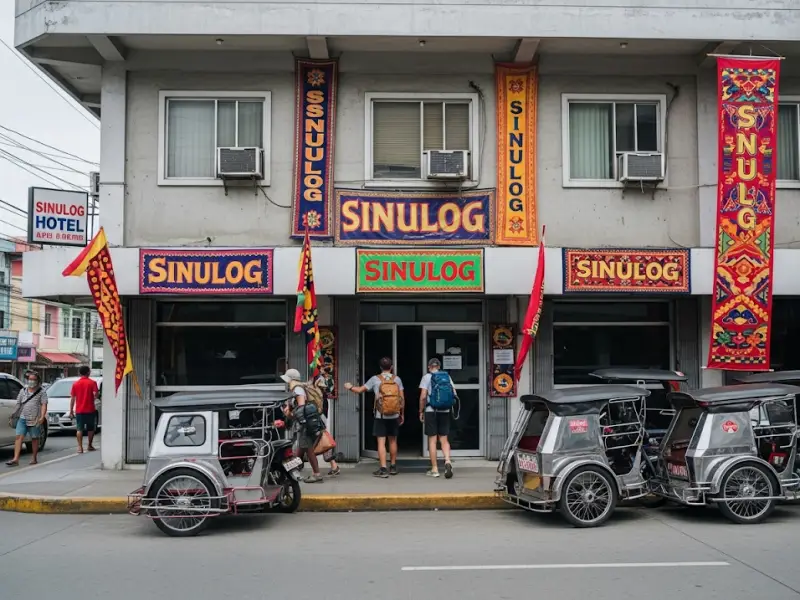
🛏 Where to Stay
Finding a place to stay during Sinulog can be just as competitive as getting the best parade spot. Cebu hotels and hostels get fully booked months in advance, so if you plan to attend, make reservations early – ideally by October or November.
🛌 Budget Stays (₱500–₱1,200 per night)
Perfect for backpackers and festival-goers who just need a bed and a fan (or AC) after a long day.
-
Best spots: Hostels and guesthouses around Fuente Osmeña Circle, the heart of the Grand Parade route.
-
What to expect: Dorm beds, basic private rooms, sometimes with free breakfast and common areas to meet fellow travelers.
-
Perk: You’re within walking distance of the action, no need to worry about traffic or road closures.
🏨 Mid-Range Hotels (₱2,000–₱4,000 per night)
For those who want comfort without splurging.
-
Best areas: Near Ayala Center Cebu or IT Park – still accessible to parade routes but less hectic than downtown.
-
What to expect: Spacious rooms, air-conditioning, Wi-Fi, and in-house restaurants. Great for travelers who want a balance of convenience and rest.
🏝 High-End Hotels (₱5,000+ per night)
For those who want a peaceful retreat after the chaos of Sinulog.
-
Popular picks: Waterfront Hotel & Casino, Radisson Blu, Seda Ayala.
-
What to expect: Luxury amenities like pools, gyms, buffets, and secure transport. Perfect for families or those combining Sinulog with a resort-style vacation.
💡 Pro Tips for Booking During Sinulog
-
Book early. Last-minute rooms are rare and overpriced.
-
Expand your search. If Cebu City hotels are fully booked, check nearby Mandaue or Lapu-Lapu City (near Mactan). Just plan to leave early since traffic is unpredictable during festival days.
-
Stay near the route if possible. Walking beats sitting in traffic or being stuck behind roadblocks.
-
Consider Airbnb. Sometimes cheaper than hotels, especially for groups.
Whether you’re in a ₱500 bunk bed or a ₱10,000 suite, the real action is outside – in the streets with the drums, dancers, and chants of Pit Señor!
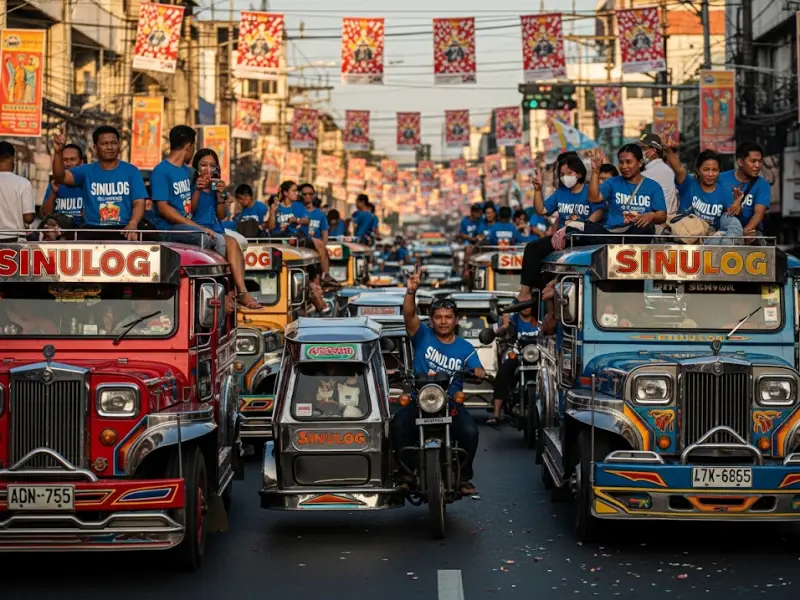
🚌 Getting Around
During Sinulog, traffic in Cebu City basically shuts down. Major roads close for the Grand Parade, and with thousands of people on the move, getting around becomes part of the adventure. Forget about quick taxi rides – the streets belong to the dancers and the crowds.
🚧 Road Closures
Most of the central parade route – Fuente Osmeña Circle, Mango Avenue, and nearby streets – are blocked off. Cars, taxis, and even private vans won’t get you anywhere near the action.
🚶 Best Options
-
Walking – Your legs are your best transport. Expect to walk several kilometers in the heat, so comfy shoes are a must.
-
Habal-habal (motorbike taxis) – In less crowded areas, these can weave through traffic and drop you closer than cars can. Just agree on the price before hopping on.
-
Jeepneys – Limited along the main parade streets, but useful in nearby neighborhoods where roads are still open.
📱 Ridesharing Apps
Grab and other ride-hailing apps work, but during Sinulog:
-
Surge pricing skyrockets.
-
Wait times can stretch from minutes to hours.
-
Many drop-off points stop far from the parade route anyway.
🧭 Survival Hack
-
Wear light clothes and comfy shoes – you’ll be walking, standing, and squeezing through crowds all day.
-
Bring a small backpack for water, wipes, and essentials. Big bags can be a hassle in packed streets.
I’ll be honest – the first time I went, I thought I could outsmart the road closures and booked a Grab. After 45 minutes stuck in traffic and getting dropped off almost 2 km from Fuente, I realized: walking really is the fastest way. Lesson learned.
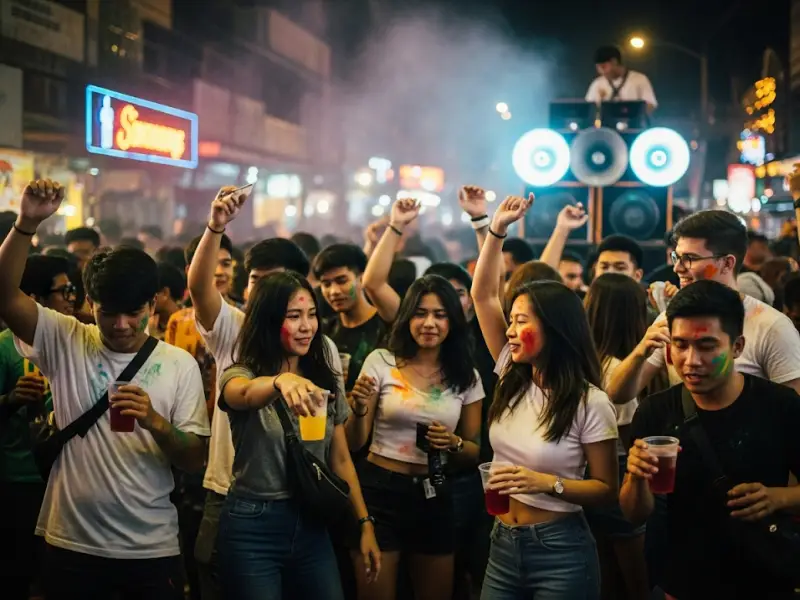
🎶 Street Parties: The Wild Side of Sinulog
When the Grand Parade winds down, Cebu doesn’t go to sleep – it explodes into one of the craziest street parties in the Philippines. If the parade is the soul of Sinulog, the after-parties are its wild heartbeat. Think of it as Cebu’s version of Mardi Gras – minus the beads, minus the tomatoes, plus beer showers, neon paint, and music blasting until sunrise.
🎧 Official Parties
These are organized events, usually fenced-in with sound systems, lights, and big-name DJs. You’ll need to buy a ticket (₱200–₱500 depending on the lineup), but in return you get:
-
Controlled entry points (a bit safer than the free-for-alls).
-
Bars and food stalls inside.
-
A proper festival vibe, with DJs dropping EDM, OPM, and everything in between.
🕺 Unofficial Parties
If you don’t want to spend on tickets, don’t worry – the streets themselves are the stage. Mango Avenue and Fuente Osmeña turn into giant outdoor clubs:
-
Music from every direction.
-
People throwing powder paint, glow sticks, or just random water splashes.
-
Beer towers, shots in plastic cups, and strangers suddenly becoming your barkada.
The best part? It’s raw, chaotic, and completely free.
⚠️ A Word of Warning
Street parties are messy – sweaty crowds, slippery roads, and the occasional beer shower. If you’re not into being bumped, splashed, or painted on, you might feel overwhelmed. In that case, stick to the cultural shows, concerts, or food stalls happening in calmer parts of the city.
✅ Survival Tips
-
Wear old clothes. Paint, powder, and drinks will find you – don’t wear anything you love.
-
Bring only essentials. A small pouch with cash, ID, and phone in a waterproof case. Leave passports and valuables at your hotel.
-
Stay with friends. The crowds are massive, and it’s easy to get separated.
-
Hydrate. Partying in the Cebu heat + beer = fast burnout. Alternate water with drinks.
The first time I joined a Mango Ave street party, I ended up covered in neon paint, dancing with strangers to “Tala” at 2 a.m. My shoes didn’t survive – but the memory is burned into my brain forever. That’s Sinulog for you: messy, loud, and unforgettable.
💸 Budget for Sinulog
| Category | Cost Range (₱) |
|---|---|
| Accommodation (per night) | ₱800 – ₱5,000+ |
| Food (per meal) | ₱100 – ₱400 |
| Transport (local) | ₱50 – ₱300 |
| Festival Extras (souvenirs, drinks) | ₱200 – ₱1,000 |
| Estimated Daily Total | ₱1,200 – ₱6,000+ |
📱 Useful Apps & Tips
-
Google Maps / Waze – for closed road navigation.
-
Grab / Angkas – ridesharing, though limited near parade areas.
-
Messenger / WhatsApp – expect weak signal, but good for group coordination.
-
Cash is King – ATMs get emptied fast; bring enough cash early.
📚 Frequently Asked Questions
Is Sinulog safe for tourists?
Yes, but expect huge crowds. Stay alert, especially at night street parties.
Do I need tickets for the Grand Parade?
Viewing along the streets is free, but grandstand seats are ticketed.
What should I wear?
Light clothes and comfy shoes. Avoid jewelry or flashy accessories.
Can kids join Sinulog?
Yes, but best to stick to daytime activities. Street parties at night aren’t family-friendly.
When should I book hotels?
At least 3–6 months ahead. Rooms fill up quickly.
Do Cebuanos still see it as a religious event?
Yes – the novena masses and fluvial procession remain deeply spiritual. The street parties are more of the cultural/fun side.
What’s “Pit Senyor”?
It’s the traditional Sinulog cheer, short for “Viva Señor Santo Niño!” – you’ll hear it everywhere.
❤️ The Spirit of Sinulog
My first Sinulog felt like sensory overload – heat, crowds, loud music, and endless dancing. But then you see the faith of devotees carrying images of the Santo Niño, hear the drums beating in rhythm, and feel the collective joy of millions shouting “Pit Senyor!”.
Sinulog isn’t just a festival; it’s a reflection of Filipino culture: faith, resilience, celebration, and community. Whether you’re here for the parade, the devotion, or just the fun, one thing’s for sure: Sinulog is something you’ll never forget.
So if it’s your first time – pack your bag, bring your energy, and let Cebu welcome you to its grandest fiesta. Viva Pit Senyor! 🎉



